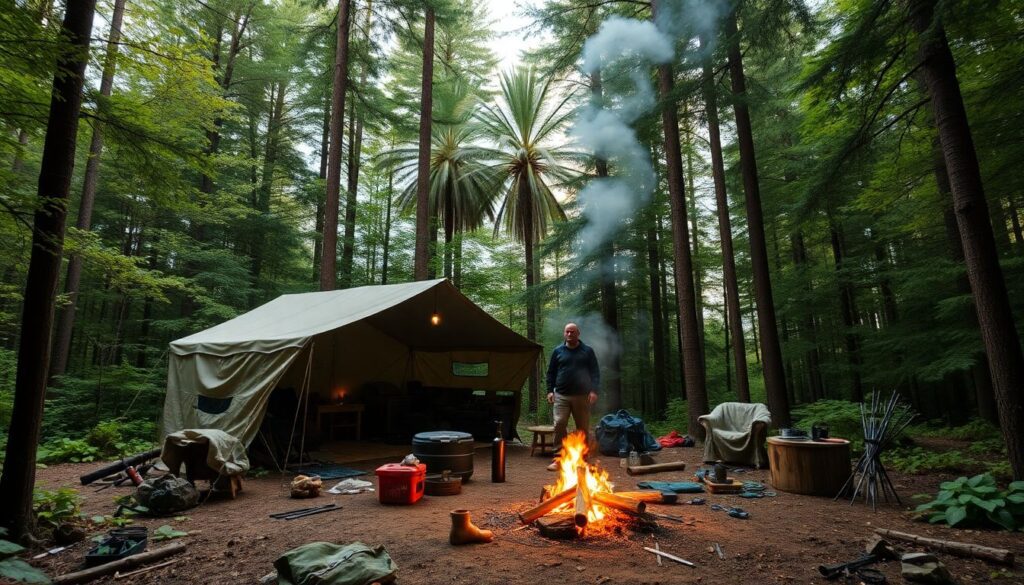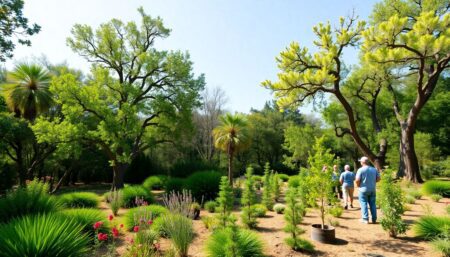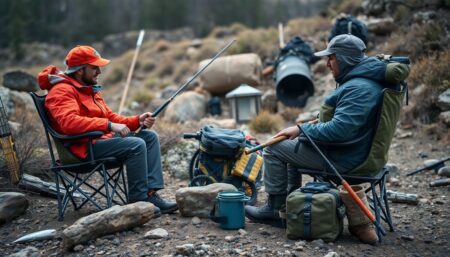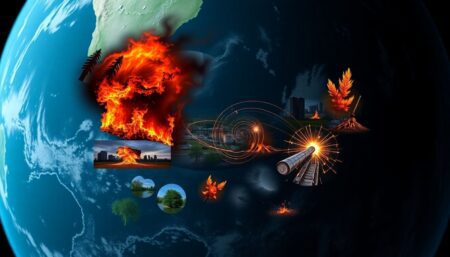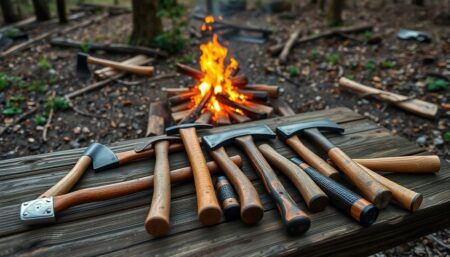Have you ever wondered what it would take to leave the comforts of modern life behind and venture into the great unknown, embracing an off-grid existence in the heart of the wilderness? The allure of long-term outdoor living, or ‘wilderness survival,’ is a captivating concept that has drawn adventurers, nature enthusiasts, and preppers alike for centuries. But with great appeal comes great responsibility. The wilderness is a formidable force, and surviving its challenges requires more than just a sense of adventure. It demands knowledge, skill, and a deep understanding of the natural world.
According to a survey by the Outdoor Industry Association, nearly half of all Americans participate in outdoor activities each year, with camping being one of the most popular. Yet, while many of us enjoy the occasional weekend getaway, the idea of setting up camp and staying there for the long haul is a daunting prospect. This is where our ‘Prepper’s Guide to Surviving in the Wilderness: Long-Term Outdoor Living’ comes in.
We agree that the thought of living off the land, away from the humdrum of everyday life, is enticing. But we also understand the apprehension that comes with the unknown. That’s why we promise to provide you with a comprehensive, step-by-step guide to help you navigate the complexities of long-term outdoor living. From finding and purifying water, to building shelters, starting fires, and foraging for food, we’ll cover it all. By the end of this guide, you’ll have the confidence and know-how to survive and thrive in the wilderness.
But why should you trust us? Our team of experts has spent countless hours researching, testing, and refining our methods in real-world conditions. We’ve faced the elements, learned from our mistakes, and come out stronger. We’ve also drawn from the wisdom of seasoned survivalists, indigenous cultures, and historical accounts to bring you a wealth of knowledge that spans centuries and continents.
So, whether you’re a seasoned outdoorsman looking to expand your skills, a prepper preparing for the worst, or simply a curious mind eager to learn, this guide is for you. It’s not just about surviving in the wilderness; it’s about understanding it, respecting it, and becoming a part of it. So, are you ready to take the first step towards your off-grid adventure? Let’s dive in.
Mastering the Art of Off-Grid Existence
Imagine a life untethered from the humdrum of modern society, where the rhythm of your day is dictated by the sun’s arc, and the only ‘office’ you know is the great outdoors. This is the allure of mastering the art of off-grid existence. It’s not about shunning progress, but rather, embracing a simpler, more sustainable way of life. Picture waking up to the symphony of birdsong instead of an alarm clock, your morning coffee brewed over an open fire, and your day’s ‘to-do’ list consisting of tasks like tending to your vegetable patch or exploring the wilderness for wild edibles. Off-grid living is about self-sufficiency, about learning to rely on your own two hands and the bounty of nature. It’s about harnessing renewable energy sources like solar or wind power, collecting rainwater, and growing your own food. It’s about understanding the cycles of nature and living in harmony with them. But it’s not all work and no play. Off-grid living also means having the freedom to pursue hobbies and passions that might have been neglected in the hustle and bustle of city life. It’s about having the time and space to read, to create, to learn, to explore. It’s about trading in traffic jams for starry nights, and fluorescent lights for candlelit dinners. Mastering the art of off-grid existence is a journey, a learning process that requires patience, resilience, and a willingness to adapt. It’s about finding a balance between modern conveniences and ancient wisdom, between independence and community. It’s about carving out a life that’s not just sustainable, but also deeply fulfilling. So, are you ready to trade in your commuter pass for a compass, your alarm clock for the sun, and your cubicle for the great outdoors? The art of off-grid existence awaits.
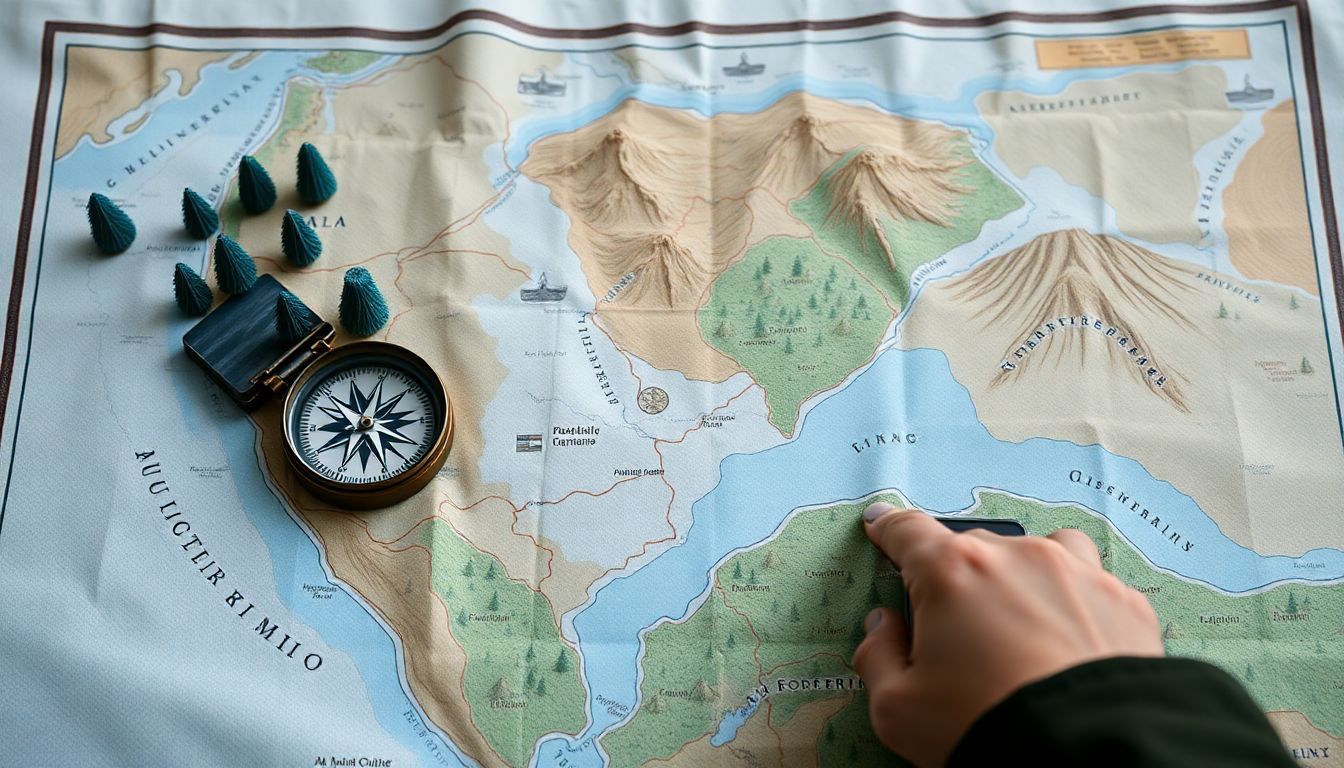
Understanding the Wilderness: Your New Home
Embarking on a journey into the wilderness, one’s new home, is an adventure that demands a profound understanding of its intricate ecosystems and the importance of knowing one’s surroundings for long-term survival. The wilderness, a vast and diverse tapestry of life, is not a static entity but a dynamic web of interdependencies, where every plant, animal, and geological feature plays a crucial role in maintaining its delicate balance.
The first step in understanding this new home is to grasp the concept of ‘terrain association’. This principle, akin to the language of the land, helps preppers navigate and adapt to different environments by recognizing the relationships between various features. For instance, certain plants may indicate the presence of water, while specific animal tracks can reveal nearby food sources or potential hazards.
Terrain association also helps in predicting weather patterns and understanding the impact of seasons on the local ecosystem. For example, in mountainous regions, the tree line can indicate the altitude at which snow becomes a permanent feature, providing valuable information about the harshness of winters.
Moreover, understanding terrain association can guide one in selecting suitable shelter sites, gathering resources, and planning routes. It can help preppers identify areas prone to flooding, landslides, or other natural hazards, enabling them to make informed decisions about where to set up camp or how to traverse the terrain.
In essence, the wilderness is not a daunting, unknown entity but a complex, interconnected web of life that rewards those who take the time to understand it. By learning the language of the land through terrain association, preppers can transform the wilderness from a challenging environment into a supportive, nurturing home.
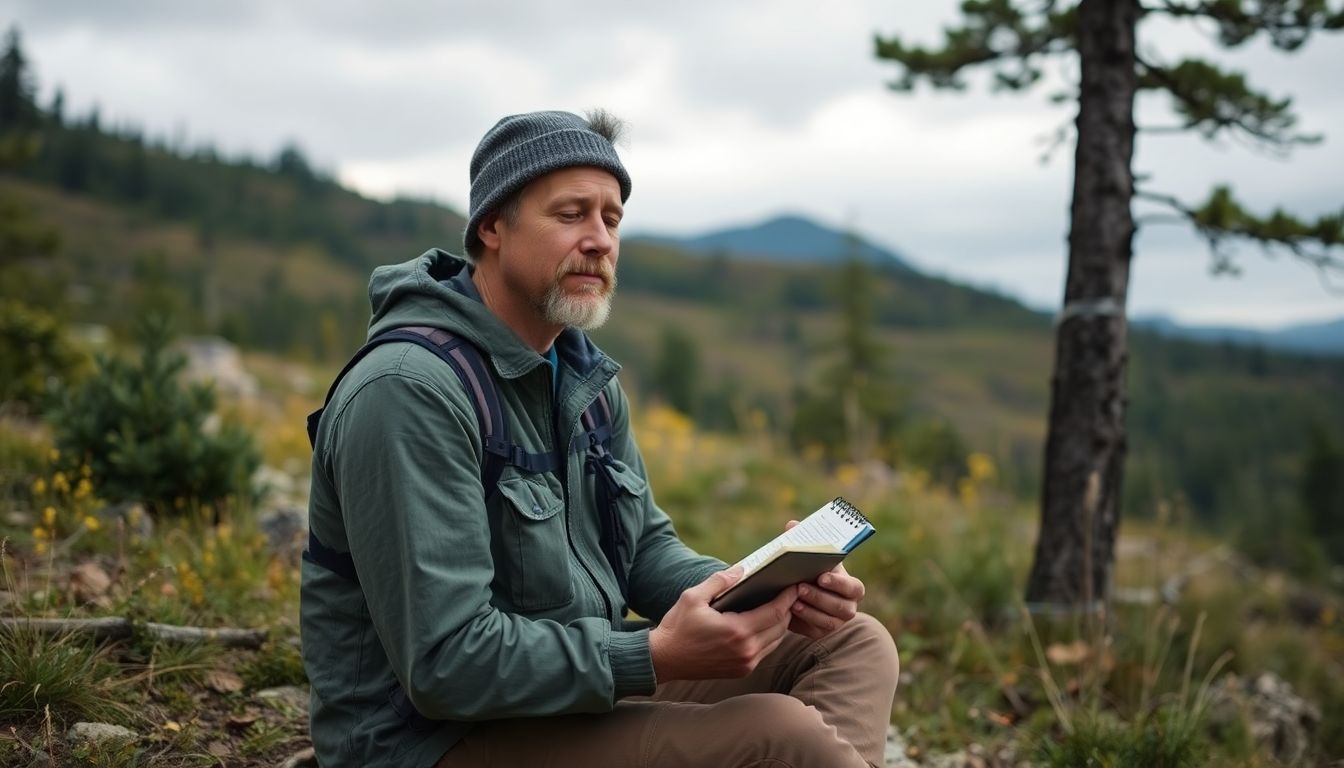
The Psychology of Survival: Mind Over Matter
Embarking on a journey into the psychology of survival, we find ourselves at the intersection of the human mind and the unyielding wilderness. Long-term wilderness living, often romanticized, is a complex dance between ‘mind’ and ‘matter’, where the former plays an indispensable role in determining the latter’s fate. The mind, a resilient yet fragile construct, is the first line of defense against the harsh realities of the wild.
The importance of a positive mindset in survival situations cannot be overstated. It’s the beacon that guides us through the darkest nights, the compass that keeps us on course when all else fails. Maintaining a positive outlook is not about denying the harsh realities of your situation, but rather, choosing to focus on what you can control and what you’ve accomplished, no matter how small. This mindset shift is the first step in mitigating ‘survival stress’, a term coined to describe the cumulative psychological toll of prolonged exposure to life-threatening situations.
Routines, the bane of some and the solace of others, become a lifeline in the wilderness. They provide structure, a sense of normalcy, and a way to mark time. Even the simplest routines, like waking up at the same time each day or preparing meals in a specific order, can help maintain a sense of control and purpose. They are the mental anchors that keep us tethered to reality when the world around us seems to be spinning out of control.
Fear and boredom, two sides of the same coin, are constant companions in the wilderness. Fear, the more immediate of the two, is a natural response to danger. It’s the body’s way of preparing for ‘fight or flight’. However, prolonged fear can lead to anxiety and paranoia, further exacerbating survival stress. Managing fear involves acknowledging it, understanding its source, and then actively working to mitigate that source. This could be as simple as ensuring you have a secure shelter or as complex as learning to navigate the wilderness with confidence.
Boredom, on the other hand, is a more insidious foe. It can lead to apathy, depression, and a lack of motivation. To combat boredom, it’s important to stay mentally active. This could involve learning new skills, setting small goals, or even engaging in simple mindfulness exercises. The key is to keep the mind engaged and the spirit lifted.
In conclusion, the psychology of survival is a complex interplay of mindset, routines, and emotion management. It’s about choosing to focus on what you can control, maintaining a sense of purpose, and keeping the mind engaged. It’s about ‘mind over matter’, in the most literal sense. After all, it’s not the strongest or the most skilled who survive, but those who can endure, adapt, and overcome.
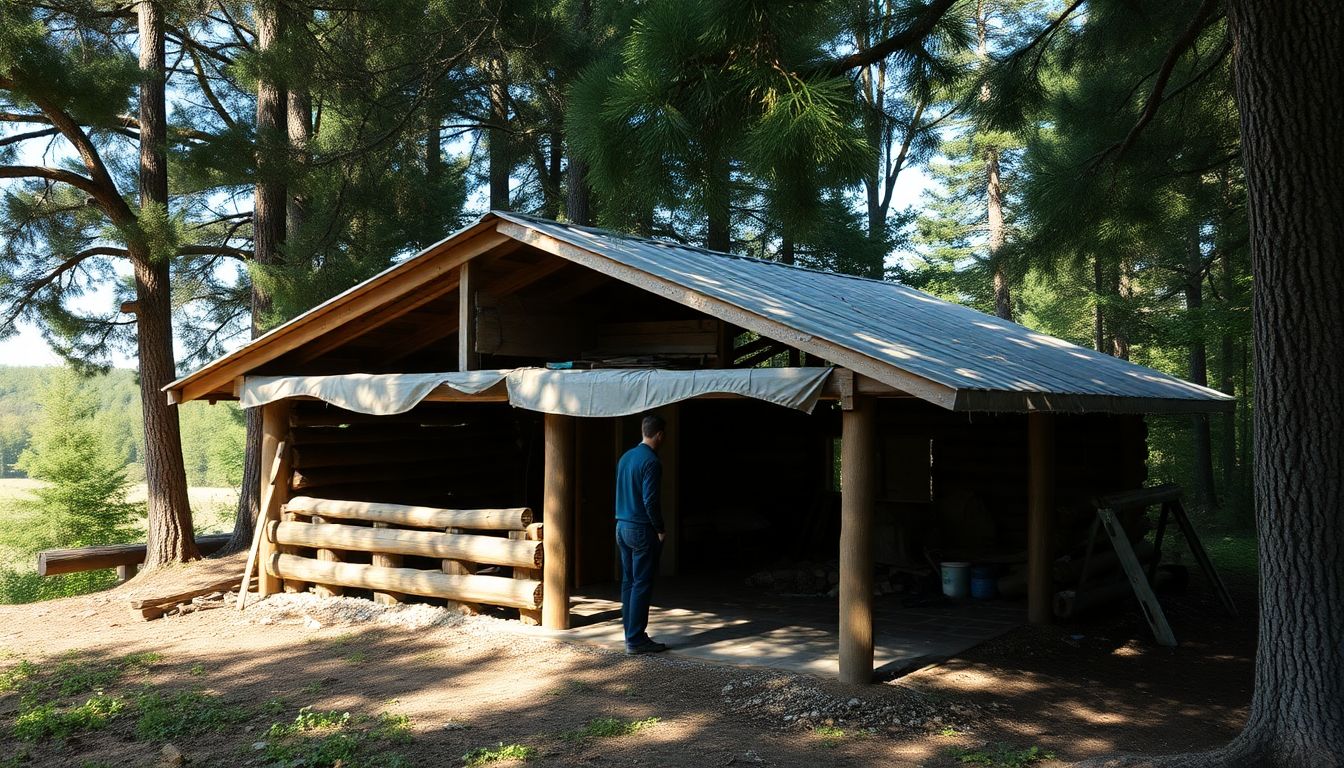
Shelter: Your First Line of Defense
In the grand tapestry of survival, shelter stands as the first and most crucial thread. It’s not just about keeping the rain off or the wind at bay; shelter is your first line of defense against the elements, providing a safe haven where you can rest, plan, and regroup. In long-term survival situations, shelter can mean the difference between life and death.
Nature, in its vast wisdom, often provides ready-made shelters. Caves, overhanging cliffs, and dense thickets can offer immediate protection. These natural shelters require no construction, just a keen eye to spot them. However, they might not always be available or suitable for your needs.
When natural shelters are scarce, it’s time to get creative with debris shelters. These can be constructed using materials found in your surroundings. The process involves creating a framework with sturdy branches and covering it with debris like leaves, pine needles, and bark. The goal is to create a thick, insulating layer that can trap heat and keep you dry. The key materials here are anything that can provide insulation and protection from the elements.
Man-made shelters, on the other hand, offer more control and customization. They can range from simple tarpaulin tents to complex structures like log cabins. The construction methods vary widely, from lashing and notching to nailing and screwing. The materials needed can include anything from canvas and plastic sheeting to logs and bricks.
But what if you’re not in a position to build a shelter? This is where the concept of ‘shelter in place’ comes into play. This strategy involves using your current location as a shelter, making it secure and habitable. It’s often the fastest and most practical solution, especially in emergency situations. By sheltering in place, you avoid exposure to the elements and potential hazards outside. It also allows you to stay put, making it easier for rescue teams to find you. Plus, it’s a great way to conserve energy, which is crucial in survival situations.
In conclusion, shelter is not just a luxury in survival; it’s a necessity. Whether you’re using natural structures, building a debris shelter, or sheltering in place, understanding the importance of shelter and how to create it can significantly improve your chances of long-term survival.
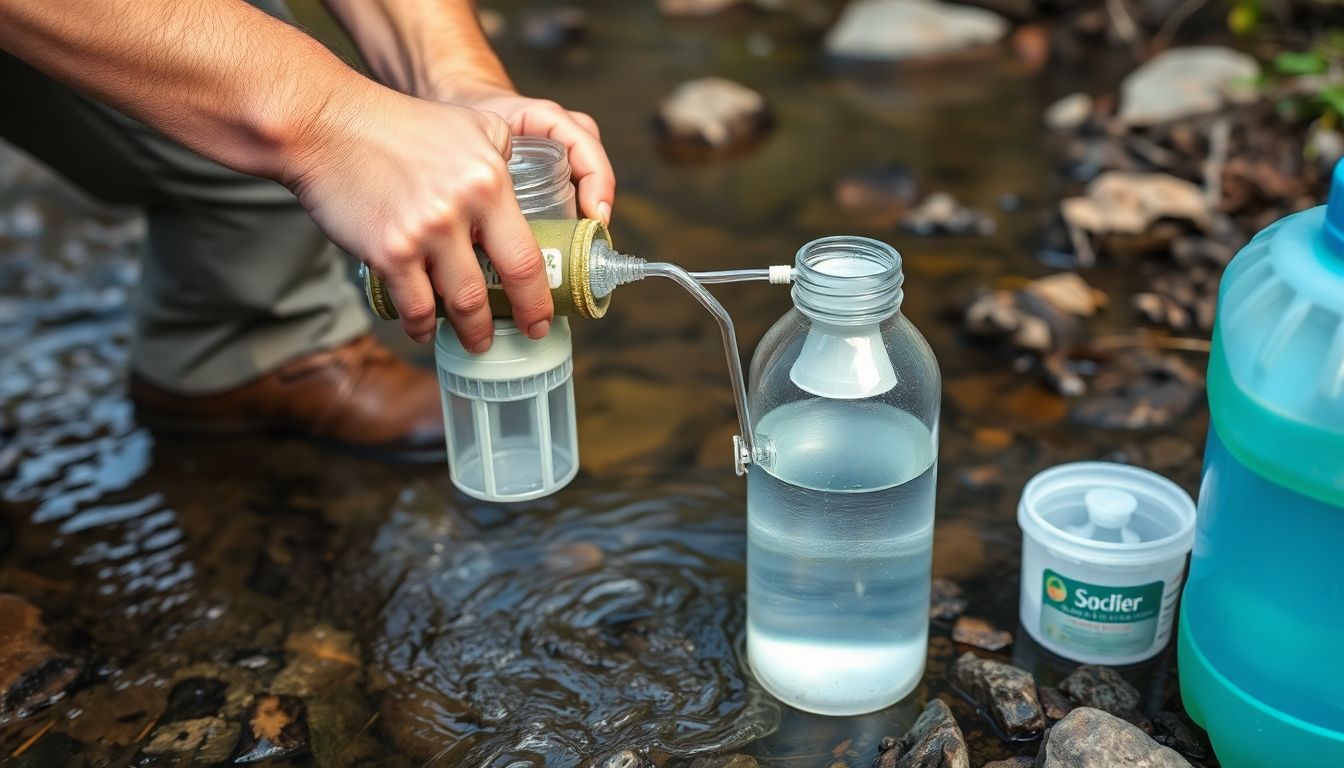
Water: The Elixir of Life
Water, often hailed as the ‘Elixir of Life,’ is not just a necessity, but a fundamental element that sustains all life on Earth. It’s the first thing we need after air, and its importance becomes even more pronounced when we venture into the great outdoors. Survival in such environments hinges on our ability to locate, purify, and store this precious resource.
The quest for water begins with identification of reliable sources. Rivers, lakes, and springs are obvious choices, but one must also know how to tap into less apparent sources like dew, rainwater, or even water locked within plants. Each source, however, presents its own challenges. Surface water, for instance, may be contaminated with bacteria, viruses, or chemicals, making purification a critical step.
Purification methods range from simple to complex. Boiling is a tried-and-true method that kills pathogens, but it requires fuel and time. Filtration using sand, charcoal, or specialized filters can remove many contaminants, while chemical treatments like iodine or chlorine tablets can also be effective. UV light purifiers, while expensive, offer a modern, chemical-free alternative.
Storage is another crucial aspect. Containers should be clean, durable, and capable of holding enough water for the duration of the trip. Rotating water stocks to ensure freshness is also important. Moreover, it’s essential to store water in a way that protects it from sunlight and contamination.
Hydration discipline is the key to long-term outdoor living. It’s not just about drinking when thirsty; it’s about maintaining a consistent water intake to prevent dehydration. This means drinking even when you’re not thirsty, especially in hot or physically demanding conditions. It also involves knowing when to drink
- sipping regularly is better than gulping down large amounts at once.
In conclusion, understanding and practicing these water management techniques can mean the difference between life and death in the wild. After all, water is not just an elixir; it’s the very essence of life itself.
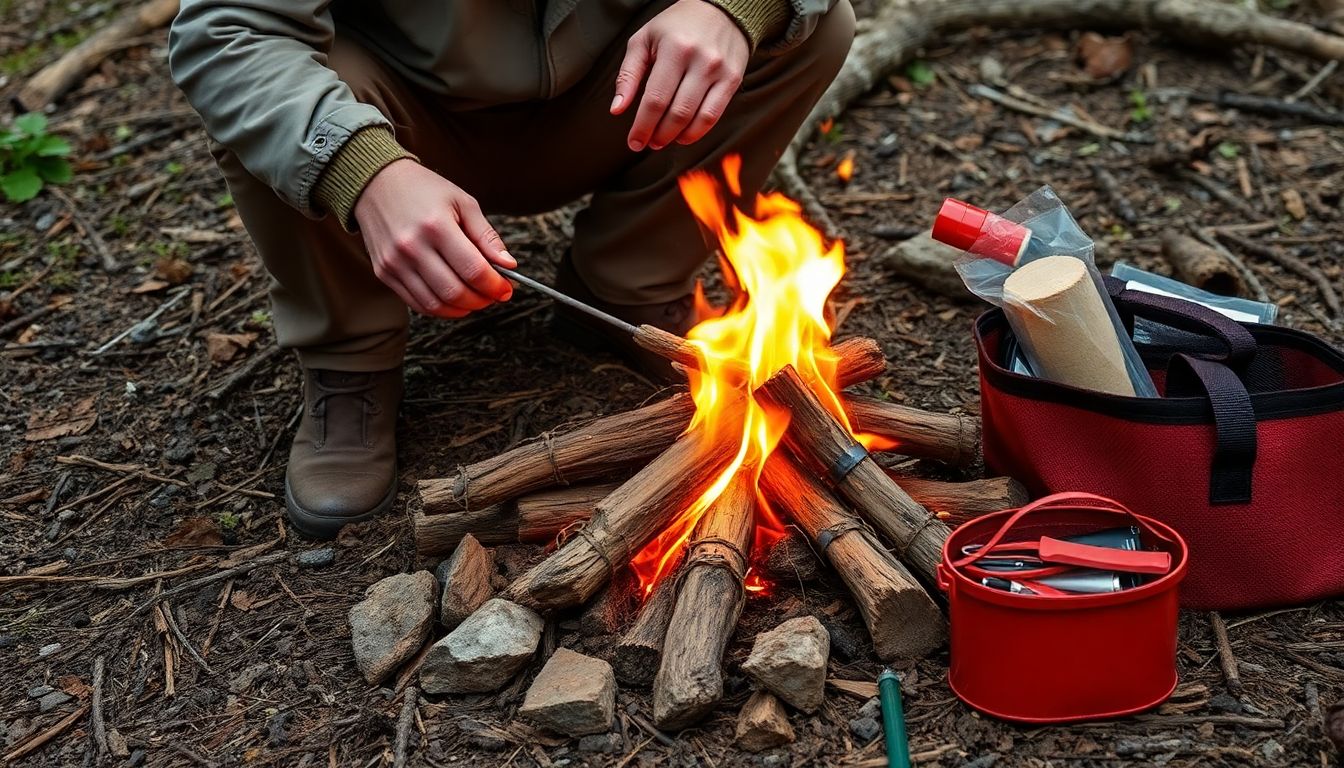
Fire: The Backbone of Survival
In the vast, untamed wilderness, fire is not just a luxury, but a necessity, a companion, and a lifeline. It is the backbone of survival, a multifaceted tool that serves a myriad of purposes, each as vital as the next. The most primal and immediate role of fire is to provide warmth, a shield against the cold that can be as unforgiving as the wilderness itself. It transforms a chilly night into a cozy haven, a place where one can rest and recharge, ready to face the challenges of the next day.
Fire is also the key to sustenance, the heart of the cooking process. It turns raw ingredients into nourishing meals, providing the energy needed to navigate the wilderness. The dance of flames can also signal distress, a beacon of hope in the darkest nights, a way to communicate with the world beyond the wilderness.
But fire is not just about physical survival. It provides psychological comfort, a sense of security and companionship in the solitude of the wilderness. It is a symbol of humanity in the wild, a reminder of home, of community, of all that we are.
To harness this power, one must understand the art of fire-starting. This could involve the use of matches, lighters, or more primitive methods like the friction-based bow drill or hand drill. Each method requires skill, patience, and a deep respect for the element one is attempting to control.
Once ignited, fire must be managed. This involves understanding the different types of fires
- a small, contained fire for cooking, a larger, more open fire for warmth, and the careful use of signal fires. It also involves knowing how to extinguish a fire safely, to leave no trace of one’s passage through the wilderness.
Fire safety is paramount. It involves understanding the behavior of fire, the conditions under which it spreads, and the steps to take if it gets out of control. It involves respecting the power of fire, understanding that it can be as destructive as it is constructive.
In essence, fire is a complex, powerful tool, a force to be reckoned with. It is the backbone of survival, a testament to our ability to adapt, to thrive in the most challenging of environments. It is a skill to be learned, a responsibility to be taken, and a power to be respected.

Food: Sustaining Body and Soul
In the grand tapestry of human existence, few threads are as fundamental as our relationship with food. It’s not just about filling our bellies; it’s about sustaining our bodies, nourishing our minds, and feeding our souls. When we venture into the wilderness, this relationship becomes even more profound and multifaceted.
Foraging, hunting, fishing, and gardening
- these are the time-honored methods by which our ancestors, and indeed many modern-day survivalists, procure their food. Each of these pursuits requires a deep understanding of the natural world, a respect for the creatures and plants that share our environment, and a keen eye for detail. Foraging, for instance, involves knowing which plants are edible, where to find them, and how to prepare them. Hunting demands patience, stealth, and a deep respect for the animals we pursue. Fishing requires an understanding of the waterways, the habits of the fish, and the art of casting a line. Gardening, meanwhile, is about cultivating a relationship with the soil, the sun, and the rain.
But it’s not just about the procurement of food. It’s about balance
- a balanced diet that provides the nutrients our bodies need to thrive. In the wilderness, this can be a challenge. It’s easy to fall into the trap of eating too much of one thing and not enough of another. This is where knowledge of wild edibles, and perhaps even some basic nutrition, can be invaluable.
Food preservation is another crucial aspect of long-term food procurement. In the wilderness, there are no refrigerators, no freezers, no supermarkets. What you catch, you must preserve. This could mean smoking fish, salting meat, or fermenting vegetables. It’s a skill that requires practice, patience, and a keen eye for detail.
Finally, it’s important to understand the concept of ‘caloric deficit’ in survival situations. In the wilderness, it’s easy to burn more calories than you consume. This can lead to a state of chronic hunger, which can in turn lead to a host of health problems. It’s a delicate balance, and one that requires a deep understanding of your body, your environment, and your needs.
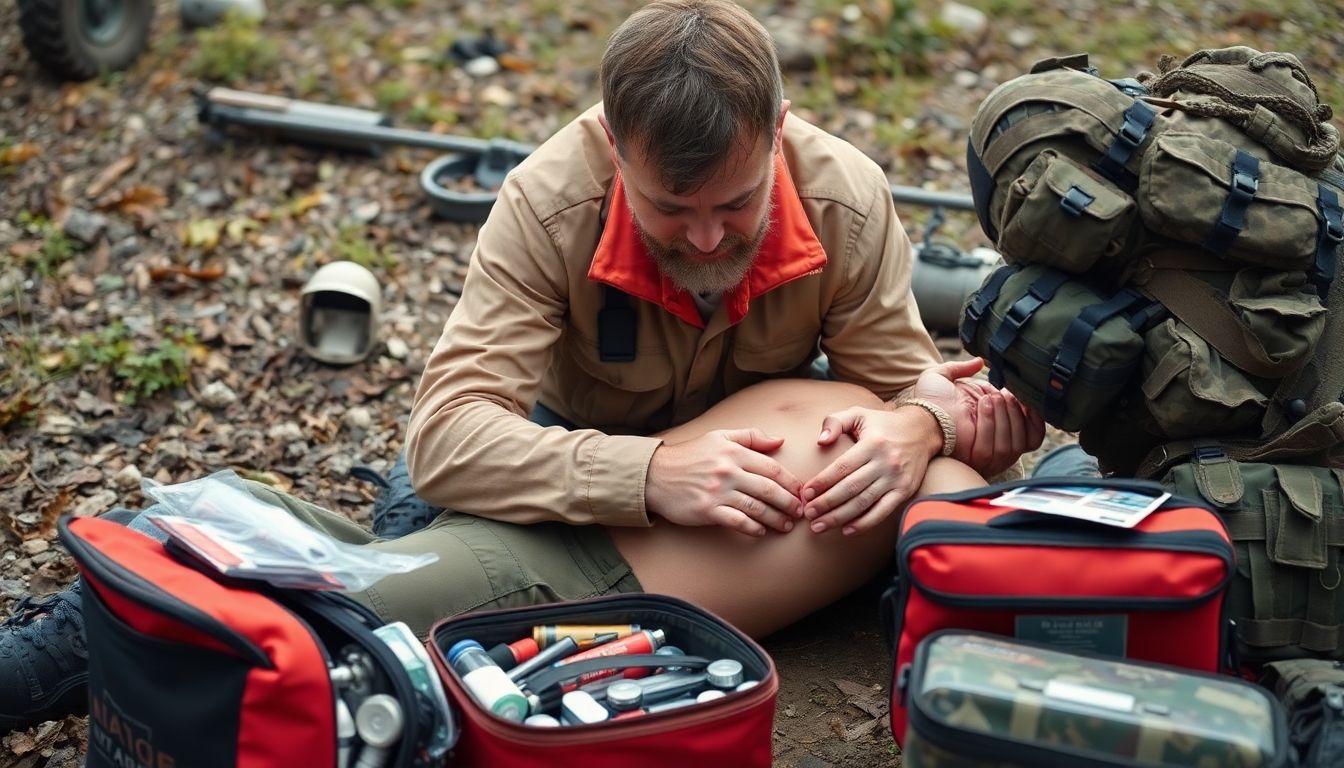
First Aid and Medical Care: Keeping Yourself Healthy
In the grand tapestry of survival, first aid and medical care are the golden threads that weave together our well-being and longevity. Imagine you’re miles from civilization, a sudden storm has left you with a deep gash on your leg, and the nearest hospital is a day’s hike away. This is where your medical knowledge and improvisation skills become your lifeline.
The first step in any medical emergency is to stay calm and assess the situation. This is where a basic understanding of anatomy and physiology comes in handy. You should know the difference between a cut and a fracture, a sprain and a strain, and how to treat each accordingly. For instance, a cut may require cleaning, dressing, and possibly stitching, while a fracture needs to be immobilized to prevent further damage.
Illnesses, too, can be life-threatening in a survival situation. Knowing the signs of dehydration, hypothermia, or heat exhaustion can mean the difference between a minor inconvenience and a major crisis. Understanding how to treat these conditions, such as rehydrating, warming or cooling the body as needed, can be crucial.
But what about when you don’t have access to proper medical supplies? This is where ‘medical improvisation’ comes into play. A makeshift bandage can be created from a torn piece of clothing, a splint from a sturdy branch, and a sling from a piece of cloth. Even nature can provide remedies, with plants like aloe vera having natural healing properties. However, always be cautious when using plants for medicinal purposes, as some can be toxic.
In essence, first aid and medical knowledge are not just about treating injuries and illnesses; they’re about prevention. Knowing how to avoid hazards, how to protect yourself from the elements, and how to maintain a healthy body and mind can greatly increase your chances of long-term survival. So, the next time you’re out in the wild, remember, the best medicine is often the knowledge you carry in your head.

Tools and Gear: Your Survival Arsenal
Embarking on a long-term outdoor living adventure or preparing for unexpected situations requires a well-thought-out survival arsenal. This isn’t about packing your bag with every gadget under the sun, but rather curating a collection of essential tools and gear that serve multiple purposes and ensure your safety and comfort. Let’s delve into some of these crucial items, their uses, maintenance, and improvisation techniques.
The first category to consider is cutting and slicing tools. A high-quality knife is an absolute must. It can be used for everything from food preparation to self-defense, and even as a makeshift screwdriver in a pinch. Maintenance involves keeping it clean and sharp, and learning how to sharpen it properly can save you a lot of trouble. As for improvisation, a sharp rock can serve as a makeshift knife, but always prioritize safety when using found objects.
Multi-purpose tools, like a good old Swiss Army knife, are your friend in the outdoors. They often come with a blade, scissors, a can opener, a bottle opener, and sometimes even a tiny screwdriver or pliers. The key is to choose one that suits your needs and learn how to use each tool effectively. Maintenance involves keeping it clean and lubricated, and replacing any broken parts as soon as possible.
Fire-starting tools are another essential. A reliable lighter, waterproof matches, and a firesteel are all excellent choices. The key is to have more than one method, as redundancy is crucial in survival situations. Maintenance involves keeping them dry and in good working order, and practicing using them so you’re familiar with their quirks.
Shelter and warmth are next on the list. A good sleeping bag, a tarp, and a way to secure them are all important. A multi-tool can help with securing guy lines, and a tarp can double as a makeshift shelter or a groundsheet. Maintenance involves keeping them clean and dry, and storing them properly when not in use.
Water purification is another crucial aspect. A good water filter or purification tablets are essential. Maintenance involves cleaning the filter regularly and replacing it when necessary. As for improvisation, boiling water can kill most pathogens, but this method requires a lot of fuel and time.
Lastly, let’s not forget about navigation. A map and compass are invaluable, as is knowing how to use them. A GPS device can be a lifesaver, but it’s not a replacement for traditional navigation skills. Maintenance involves keeping them dry and in good working order, and practicing using them regularly.
In conclusion, building your survival arsenal is about more than just having the right tools. It’s about understanding their uses, maintaining them properly, and knowing how to improvise when necessary. It’s about redundancy, so you’re never left high and dry if one tool fails. And it’s about versatility, so your tools can serve multiple purposes and help you make the most of your time in the great outdoors.
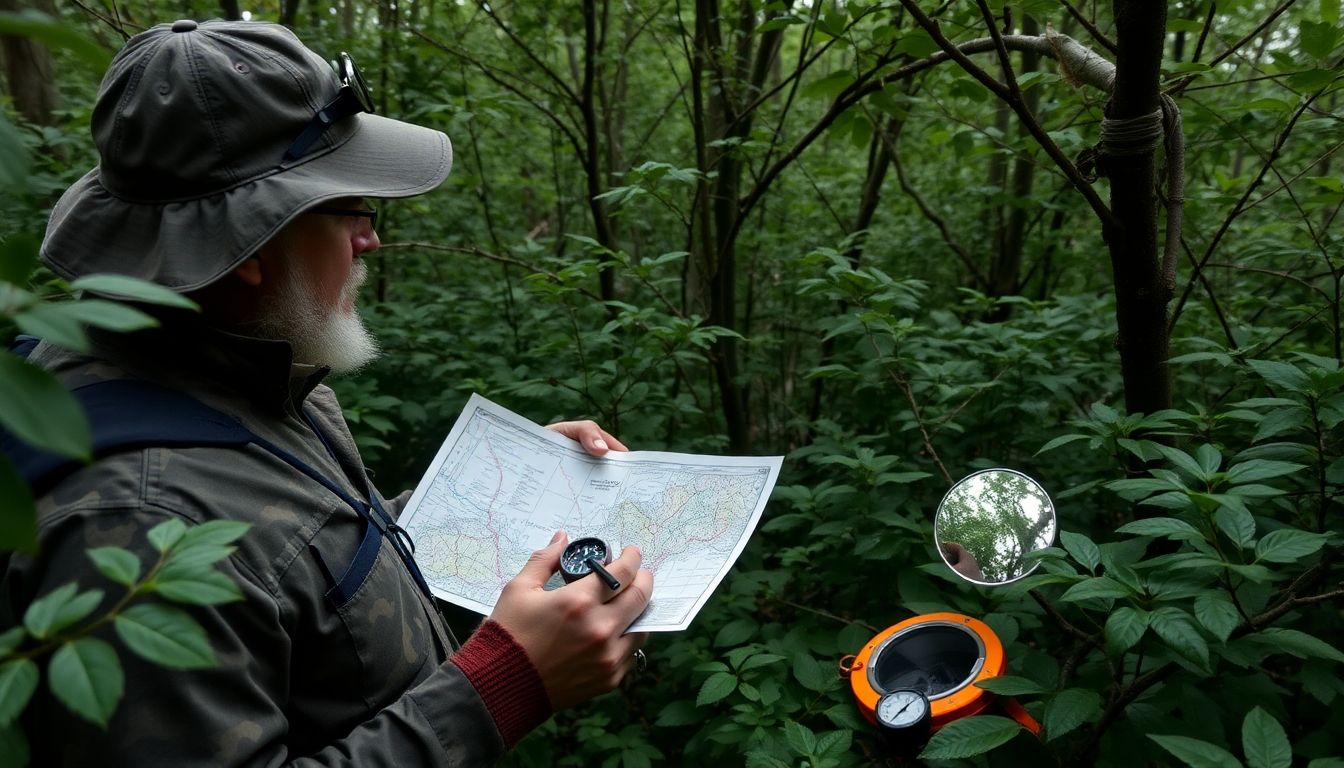
Navigation and Communication: Staying Connected
In the vast expanse of our world, whether it’s the sprawling wilderness or the urban jungle, the ability to navigate and communicate effectively is not just a convenience, but a necessity, especially when it comes to long-term survival. Navigation, the process of determining one’s position and planning the route to a destination, is the first step in staying connected. It’s about understanding your surroundings, reading the landscape, and using the tools at your disposal to find your way. This could be as simple as using the sun’s position during the day or the North Star at night, or as complex as employing GPS devices or maps and compasses. The latter, while more reliable, also require knowledge and practice to use effectively.
Communication, on the other hand, is about sending and receiving information. In a survival situation, this could mean signaling for help, or it could mean maintaining contact with a group or a base camp. Signaling devices like mirrors, whistles, or even fires can be used to attract attention. But it’s not just about sending messages, it’s also about planning how you’ll communicate. This is where ‘communication planning’ comes in. It’s about deciding on a communication protocol, a set of rules and procedures for sending and receiving messages. It’s about choosing a common language, a frequency for radio communication, or a set of signals for visual communication.
Staying connected with the outside world is not just about survival, it’s also about maintaining a sense of community and hope. It’s about knowing that you’re not alone, that help is on the way, or that you can provide help to others. It’s about understanding that even in the most isolated of situations, we’re all connected, and that connection can be maintained and strengthened through effective navigation and communication.
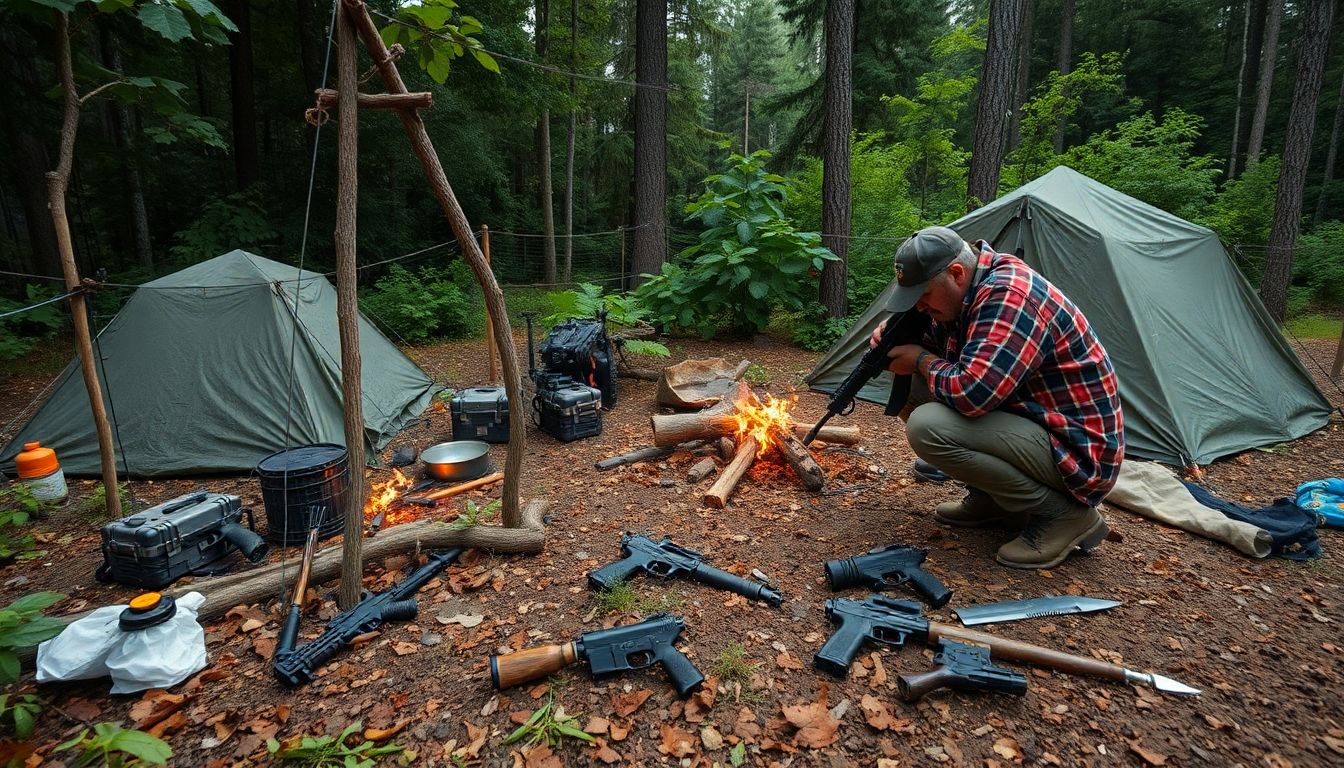
Security and Self-Defense: Protecting Yourself and Your Supplies
In the realm of long-term survival, security and self-defense are not just buzzwords, but essential lifelines that can mean the difference between safety and peril. The threats we face are as varied as the environments we inhabit, ranging from two-legged predators seeking to exploit our resources to four-legged creatures driven by primal instincts. Human threats can manifest in numerous ways, from opportunistic looters to organized gangs, each presenting unique challenges that require tailored responses. Animal threats, on the other hand, are often guided by hunger or territorial instincts, demanding a different set of defensive strategies.
The first line of defense is not a weapon, but a mindset
- situational awareness. This is not just about being alert, but about understanding your environment and the potential threats it harbors. It’s about knowing the layout of your surroundings, the hiding spots, the escape routes, and the potential hazards. It’s about being aware of the people around you, their actions, and their intentions. In essence, situational awareness is about turning your surroundings into an extension of your senses, allowing you to react swiftly and effectively to any threat.
To maintain a safe and secure environment, there are several steps one can take. Firstly, it’s crucial to secure your supplies. This could involve anything from hiding your cache to installing locks and alarms. The goal is to make your supplies less accessible to potential thieves, while also making it clear that you are willing to defend them. Secondly, it’s important to fortify your living space. This could involve building barriers, setting up traps, or even creating a safe room. The goal is to make your space less accessible to threats, while also providing a safe haven in case of an attack. Lastly, it’s crucial to be prepared. This involves not just having the right tools and weapons, but also knowing how to use them. It involves training in self-defense, understanding first aid, and knowing how to handle a variety of situations.
In conclusion, security and self-defense are not just about protecting your supplies, but about protecting yourself. They are about understanding your environment, being prepared, and being willing to defend what is yours. They are about turning your surroundings into a safe haven, a place where you can weather the storm and emerge unscathed. And above all, they are about being aware, being prepared, and being ready to face whatever challenges the world throws at you.
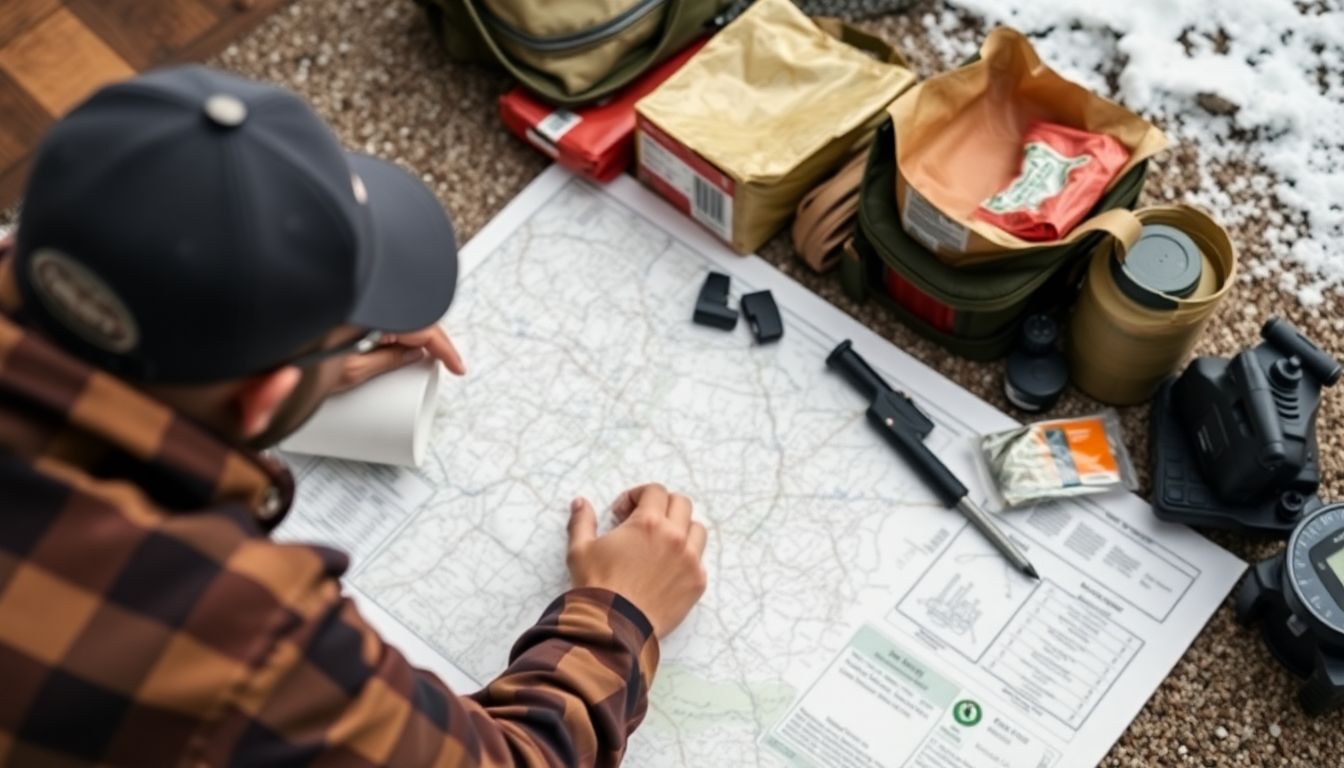
Long-Term Planning: Preparing for the Unexpected
In the vast, unpredictable expanse of the wilderness, long-term planning is not just an asset, but a necessity. It’s the difference between a successful, safe journey and a harrowing, unforeseen ordeal. The concept of ‘contingency planning’ is central to this, involving the anticipation of events that may not have happened yet, but could. It’s like packing a raincoat, not because it’s raining now, but because it might.
Unexpected events, like a sudden storm, an injury, or losing your way, can throw a wrench into even the most meticulously planned trips. That’s where ‘adaptive planning’ comes in. It’s the art of adjusting your strategies as your situation changes. It’s about being flexible, ready to pivot, to reassess, and to reprioritize.
Here are some steps to help you prepare for the unexpected:
- Anticipate Potential Hazards: Research the area you’ll be traveling through. Understand the weather patterns, the wildlife, the terrain. This knowledge can help you anticipate and prepare for potential hazards.
- Pack Multi-Purpose Items: Every item in your pack should earn its place. Multi-purpose items can help you adapt to a variety of situations. For example, a bandana can be used as a tourniquet, a sling, a pot holder, or even a makeshift shelter.
- Learn Survival Skills: Knowing how to start a fire, purify water, navigate without a map, and treat injuries can greatly increase your chances of survival in unexpected situations.
- Communicate Your Plan: Let someone not going on the trip know your route, your timeline, and your communication plan. If something goes wrong, they can raise the alarm.
- Stay Calm and Think: When the unexpected happens, it’s easy to panic. But panicking uses up valuable energy and can lead to poor decisions. Take a deep breath, assess the situation, and make a plan.
Long-term planning in wilderness survival is not about predicting the future, but about being prepared for it. It’s about turning the unexpected into the expected, the unpredictable into the manageable. It’s about ensuring that you’re not just ready for the journey you planned, but for the journey that might happen.
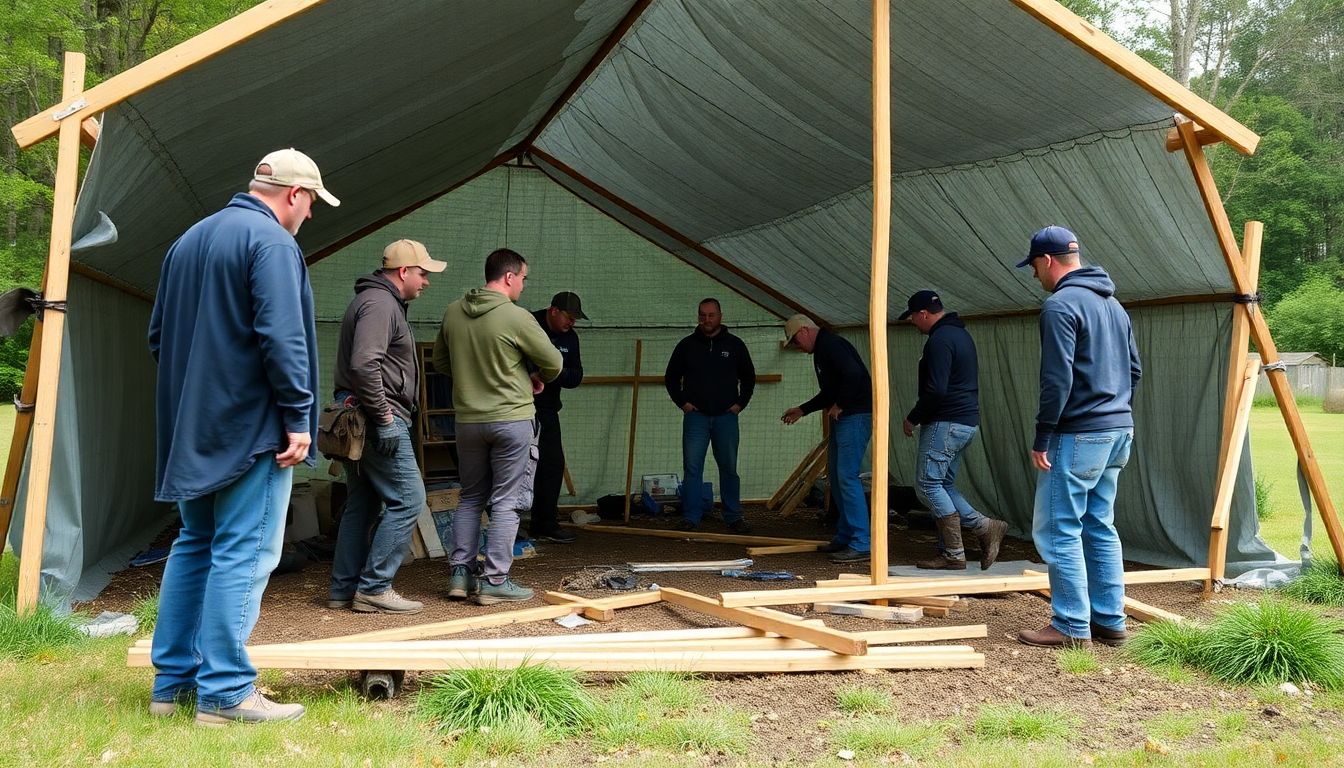
Community and Camaraderie: The Power of Togetherness
In the grand tapestry of life, few threads are as resilient and vital as the bonds we forge with one another. This is especially true when faced with long-term survival challenges, where the power of togetherness can mean the difference between thriving and merely enduring. Community and camaraderie, like two sides of the same coin, are not just about survival; they are about enhancing our quality of life, fostering growth, and creating a support network that can weather any storm.
The benefits of working together in a community are as numerous as the stars in the night sky. Firstly, there’s the sharing of resources. In a survival context, this could mean splitting the workload, sharing tools and supplies, or even pooling food and water. By dividing tasks and resources, we can increase efficiency and ensure that no one individual is overwhelmed or left behind.
Secondly, there’s the concept of mutual aid. This is more than just sharing resources; it’s about actively supporting one another. It’s about the person who knows how to start a fire teaching others, or the skilled hunter sharing their catch with those who need it most. Mutual aid is about recognizing that our individual strengths can be amplified when we use them to help others, creating a cycle of support and growth.
Building and maintaining strong survival communities is no easy task, but it’s a journey that can be broken down into manageable steps. Firstly, it’s important to identify shared goals and values. This could be anything from a commitment to sustainability to a shared belief in the power of community. Having a common purpose provides a foundation for everything else.
Next, it’s crucial to foster open communication. This means actively listening to one another, valuing diverse perspectives, and encouraging dialogue. Open communication helps to build trust, which is the bedrock of any strong community.
Lastly, it’s important to remember that communities are not static entities. They evolve and change over time, and it’s crucial to be adaptable and flexible. This means being open to new ideas, willing to change strategies when necessary, and always striving to improve.
In conclusion, the power of togetherness is undeniable. It’s in the shared meals, the laughter around the campfire, the collective sigh of relief when a task is completed. It’s in the knowledge that we are not alone, that we have each other’s backs, and that together, we can face whatever challenges come our way. So, let’s embrace the power of community and camaraderie, for it is in our togetherness that we find our true strength.
FAQ
What are the fundamental skills required for long-term outdoor living in the wilderness?
- Navigation and orienteering to find your way around,
- Fire-making techniques to provide warmth, light, and a means to cook,
- Shelter building to protect from elements,
- Water sourcing and purification for hydration,
- Food procurement through hunting, fishing, trapping, and foraging,
- First aid and injury treatment,
- Plant and animal identification for both sustenance and medicine,
- Tool crafting and maintenance,
- Camouflage and stealth for safety and conservation,
- Mental resilience and adaptability to cope with isolation and challenges.
How can I choose the right location for long-term wilderness survival?
- Access to clean water,
- Availability of food sources,
- Proximity to potential hazards like steep drop-offs, unstable terrain, or dangerous wildlife,
- Shelter opportunities, such as natural caves, overhangs, or flat areas for building,
- Signs of human activity, which may indicate resources or threats,
- Terrain and climate suitability for your planned activities and survival strategies.
Research the area beforehand, and always prioritize safety and resource availability.
What are some essential tools and gear for long-term wilderness survival?
- A reliable multi-tool or knife for various tasks,
- A durable, waterproof container for carrying fire-starting materials,
- High-quality, waterproof matches or a ferro rod,
- A sturdy, versatile tarp or poncho for shelter and rain protection,
- Comfortable, durable footwear,
- Layered clothing for varying temperatures,
- A reliable water filter or purification method,
- Fishing gear and hunting implements,
- A map, compass, and whistle for navigation and signaling,
- A first aid kit,
- Headlamp and extra batteries,
- A way to carry and store food, such as a backpack or game bag.
Remember, the goal is to pack light and smart, focusing on multi-purpose items.
How can I establish a sustainable water source in the wilderness?
- Find and collect water from natural sources like streams, rivers, or lakes,
- Dig a well or create a seep system to tap into groundwater,
- Collect rainwater using a tarp or other large surface,
- Create a solar still to distill water from plants or moist soil,
- Purify water using methods such as boiling, filtration, or chemical treatment to remove bacteria, viruses, and parasites.
Always prioritize water safety and maintain a consistent supply.
What are some creative ways to obtain food in the wilderness?
- Set up traps and snares for small game,
- Fish using various techniques, such as spearfishing, hook and line, or fish traps,
- Forage for wild edible plants, berries, and nuts, ensuring proper identification and preparation,
- Hunt larger game using stealth, tracking, and stalking techniques,
- Grow a small garden using seeds, cuttings, or sprouts,
- Collect insects and grubs for protein,
- Preserve food through smoking, drying, or fermenting,
- Create a food cache or cache food in trees to deter pests and scavengers.
Always practice ethical hunting and foraging, and maintain a balanced diet.
How can I maintain my mental well-being during long-term wilderness living?
- Establish a daily routine to create structure and purpose,
- Practice mindfulness and stay present in the moment,
- Engage in creative activities, such as drawing, writing, or crafting,
- Exercise regularly to maintain physical fitness and boost mood,
- Connect with nature through observation, meditation, or spiritual practices,
- Keep a journal to process thoughts and emotions,
- Maintain a positive attitude and practice gratitude,
- Set achievable goals and celebrate small victories,
- Limit exposure to harsh environments or stressful situations,
- Seek social interaction, even if it’s just with pets or wildlife.
Remember, it’s essential to be honest with yourself about your mental state and seek help if needed.



